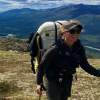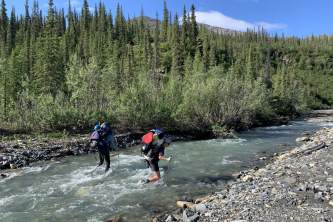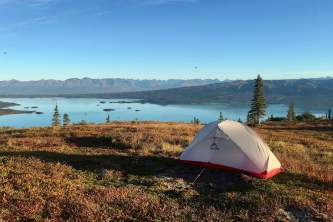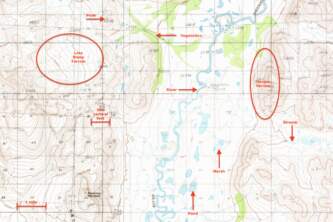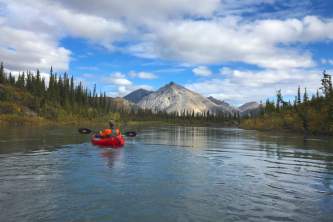Selecting a Backcountry Campsite
While you'll find any roadside campgrounds in Alaska, it's a different story in the backcountry; official campsites are few and far between. Some trails, like the Chilkoot Trail (located outside of Skagway in southeast Alaska) do have officially designated campsites, while others like Crow Pass Trail (located in Chugach State Park in southcentral Alaska) have popular camping areas that have clearly been used before. But on many backcountry trips, you'll have the opportunity to choose a campsite for yourself. At the end of a long day, it may be tempting to plop your tent down right where you are. However, careful campsite selection will ensure that you spend the night in a safe and comfortable spot, while being a good steward of the land.
There are few key components to consider when selecting a campsite: access to water, ground surface, sight lines, protection from the elements, and possibly access to firewood.
Access to Water
Water is in copious supply in Alaska, so you'll rarely have to carry more than a full water bottle during a backpacking trip. Situating your campsite near a good water source will ensure that you have plenty of water for your mac and cheese dinner and your morning coffee. Look for a water source that's clear and quick-moving. Camping too close to moving (and noisy) water may make it harder for approaching wildlife to hear and avoid you. Streams and lakes can also be surrounded by vegetation, making sight lines more difficult to maintain.
Ground Surface
While soft tundra or moss may seem like an ideal wilderness mattress, small alpine plants take a long time to regenerate when damaged by tents and the high-traffic patterns of campsites. Plus, soft vegetation is likely to hold water, leading to a soggy tent floor and a damp sleeping bag. Instead, look for small, flat gravel patches. These are possible to find, even when traveling in the alpine. You'll be less likely to damage delicate vegetation and be drier come morning, since the gravel drains naturally.
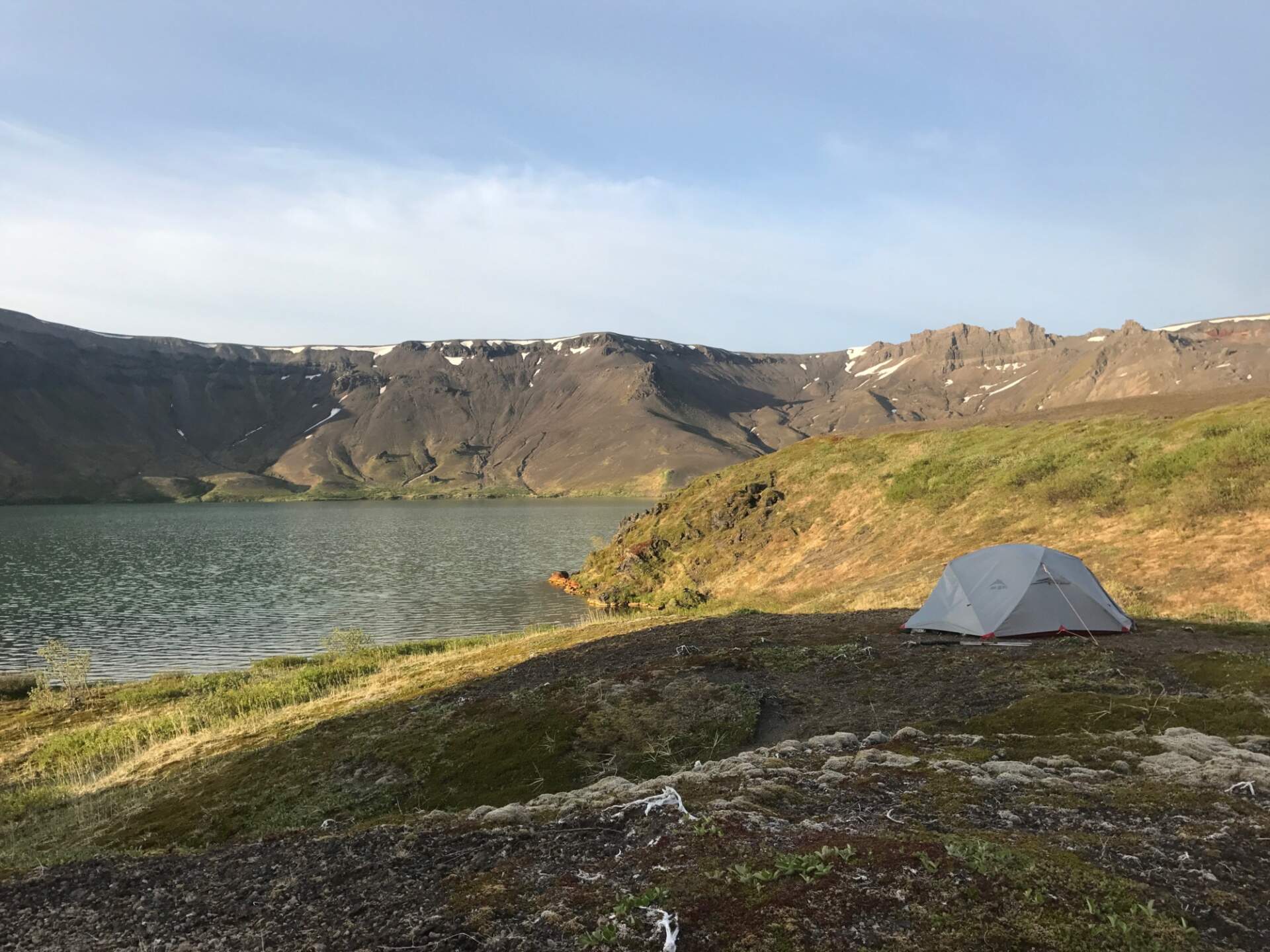
Tent pitched on a gravel patch (ie firm, durable, surface) on a tundra bench overlooking Surprise Lake. (photo courtesy of Haley Johnston)
Sight Lines
Good sight lines at a campsite ensure that you and wildlife can see one another from a distance. Wildlife - even predators - typically avoid humans when given the choice. The further you can see, the earlier you'll be able to respond to a curious animal and make enough noise to discourage it from approaching your campsite if necessary.
Protection
It might be tempting to set up your tent on a high alpine ridgeline or prominent lookout; the sight lines are great, the views and phenomenal, and your photos look fantastic. However, avoid the temptation to place your tent in such exposed locations. Strong winds are common and can occur unexpectedly in the alpine. Instead, choose locations at a lower altitude if possible and look for a windbreak, such as a stand of trees, or a rock outcropping to shelter your tent. Winds typically move down valleys, so focus on protecting yourself from the uphill direction. And remember to always use the guide lines on your tent; a calm evening can be followed by a midnight windstorm, with little warning.
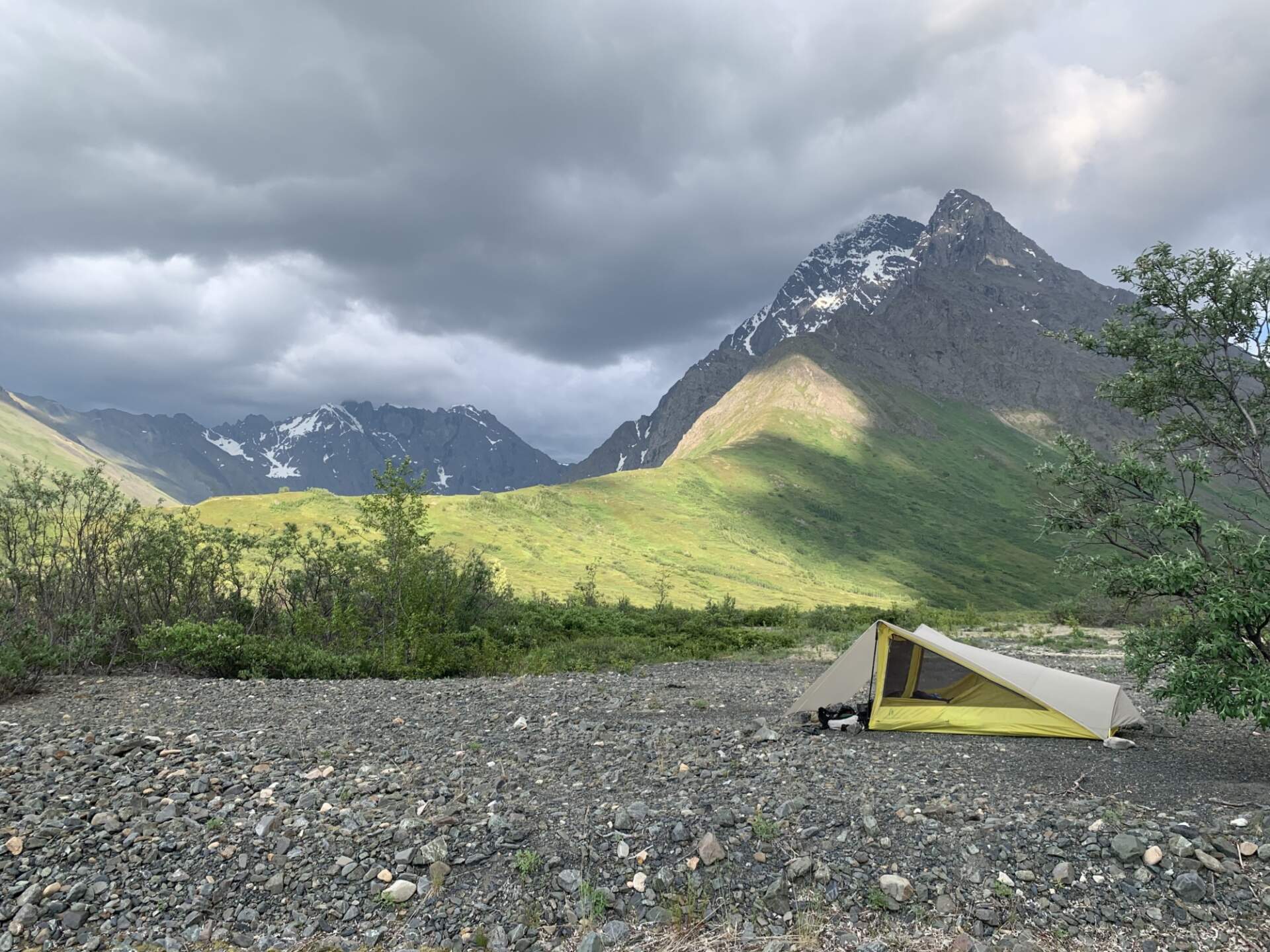
Tent pitched on a durable surface, near water source, using a willow as a windbreak, with excellent sight lines. (photo courtesy of Haley Johnston)
Setting Up Your Campsite
Once you pick a campsite and set up your tent, you're likely thinking about one thing: dinner!
Cooking location and food storage are important components of a safe campsite. Cooking in or near your sleeping area is inadvisable when in bear country. Instead, create a triangle with your campsite so that food preparation and storage are 100 yards from your sleeping area. A perfect campsite has good sight lines at both your cooking location and tenting area.
Few locations in Alaska provide trees tall enough and far enough apart to safely hang food out of reach of bears. Black bears are excellent climbers, and brown bears can easily reach 10 feet into the air. Instead, most people use bear-resistant food containers (BRFC), which are required in many locations, and store them at ground level. It's best to store these in brush or under rocks if possible, to avoid notice by curious critters.
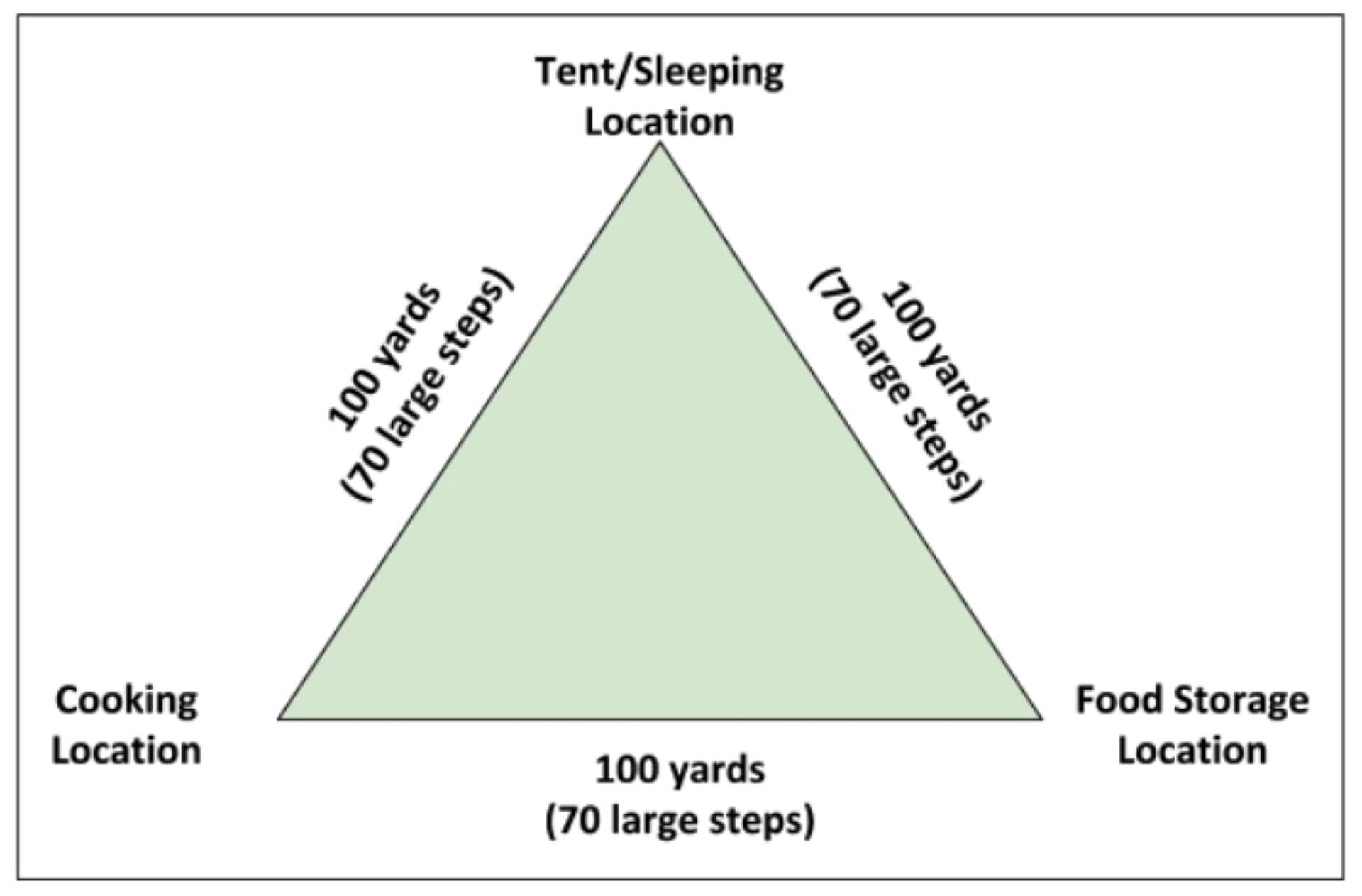
(photo courtesy of Haley Johnston)

